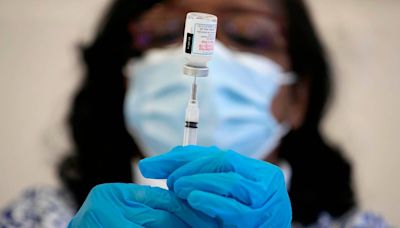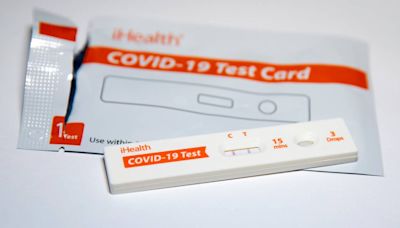Search results
By 1990, it had four centers formed in the 1980s: the Center for Infectious Diseases, Center for Chronic Disease Prevention and Health Promotion, the Center for Environmental Health and Injury Control, and the Center for Prevention Services; as well as two centers that had been absorbed by CDC from outside: the National Institute for ...
People also ask
What is CDC mission statement?
Who founded the National Center for Injury Prevention & Control?
What role does CDC play in public health laboratories?
What does CDC stand for?
Apr 4, 2023 · CDC Timeline. Print. Take a minute to review many of CDC’s momentous contributions to public health since it was organized in 1946 as the Communicable Disease Center. 2020s | 2010s | 2000s | 1990s | 1980s | 1970s | 1960s | 1950s | 1940s.
Mar 22, 2024 · In 1980, when CDC was renamed the Centers for Disease Control (after two prior name changes), its official mission was to serve as HHS’s “focus for developing and applying disease prevention and control,
- Overview
- Editorial Note:
MMWR 1996;45:526-30 (June 28, 1996)
CDC, an institution synonymous around the world with public health, will be 50 years old on July 1. The Communicable Disease Center was organized in Atlanta, Georgia, on July 1, 1946; its founder, Dr. Joseph W. Mountin, was a visionary public health leader who had high hopes for this small and comparatively insignificant branch of the Public Health Service (PHS). It occupied only one floor of the Volunteer Building on Peachtree Street and had fewer than 400 employees, most of whom were engineers and entomologists. Until the previous day, they had worked for Malaria Control in War Areas, the predecessor of CDC (Figure_1), which had successfully kept the southeastern states malaria-free during World War II and, for approximately 1 year, from murine typhus fever. The new institution would expand its interests to include all communicable diseases and would be the servant of the states, providing practical help whenever called.
Distinguished scientists soon filled CDC's laboratories, and many states and foreign countries sent their public health staffs to Atlanta for training. Any tropical disease with an insect vector and all those of zoological origin came within its purview. Dr. Mountin was not satisfied with this progress, and he impatiently pushed the staff to do more. He reminded them that except for tuberculosis and venereal disease, which had separate units in Washington, D.C., CDC was responsible for any communicable disease. To survive, it had to become a center for epidemiology.
Medical epidemiologists were scarce, and it was not until 1949 that Dr. Alexander Langmuir arrived to head the epidemiology branch. He saw CDC as "the promised land," full of possibilities. Within months, he launched the first-ever disease surveillance program, which confirmed his suspicion that malaria, on which CDC spent the largest portion of its budget, had long since disappeared. Subsequently, disease surveillance became the cornerstone on which CDC's mission of service to the states was built and, in time, changed the practice of public health.
The outbreak of the Korean War in 1950 was the impetus for creating CDC's Epidemic Intelligence Service (EIS). The threat of biological warfare loomed, and Dr. Langmuir, the most knowledgeable person in PHS about this arcane subject, saw an opportunity to train epidemiologists who would guard against ordinary threats to public health while watching out for alien germs. The first class of EIS officers arrived in Atlanta for training in 1951 and pledged to go wherever they were called for the next 2 years. These "disease detectives" quickly gained fame for "shoe-leather epidemiology" through which they ferreted out the cause of disease outbreaks.
The survival of CDC as an institution was not at all certain in the 1950s. In 1947, Emory University gave land on Clifton Road for a headquarters, but construction did not begin for more than a decade. PHS was so intent on research and the rapid growth of the National Institutes of Health that it showed little interest in what happened in Atlanta. Congress, despite the long delay in appropriating money for new buildings, was much more receptive to CDC's pleas for support than either PHS or the Bureau of the Budget.
When CDC's name changed in 1970, from the Communicable Disease Center to the Center for Disease Control, CDC scientists were poised to accept new challenges. The most notable of the agency's many achievements in the following 10 years was its role in global smallpox eradication, a program that finally succeeded because of the application of scientific principles of surveillance to a complex problem. In the realm of infectious diseases, CDC maintained its preeminence, identifying the Ebola virus and the sexual transmission of hepatitis B, and isolating the hepatitis C virus and the bacterium causing Legionnaires disease. The Study of the Effectiveness of Nosocomial Infection Control (SENIC) was the most expensive study the agency had ever undertaken and proved for the first time the effectiveness of recommended infection-control practices. Other studies included identification of the association of Reye syndrome with aspirin use, the relation between liver cancer and occupational exposure to vinyl chloride, and the harmful effects of the popular liquid protein diet.
The 1980s institutionalized what is considered to be a critically important scientific activity at CDC -- the collaboration of laboratorians and epidemiologists. The decade began with the national epidemic of toxic-shock syndrome, documentation of the association with a particular brand of tampons, and the subsequent withdrawal of that brand from the market. CDC collaboration with the National Center for Health Statistics (NCHS) resulted in the removal of lead from gasoline, which in turn has markedly decreased this exposure in all segments of the population. The major public health event of the 1980s was the emergence of AIDS. CDC helped lead the response to this epidemic, including characterization of the syndrome and defining risk factors for disease.
CDC became involved in two very large epidemiologic studies during the 1980s. First, the Cancer and Steroid Hormone Study conducted in collaboration with the National Cancer Institute assessed the risks for breast, cervical, and ovarian cancers associated with both oral contraceptives and estrogen replacement therapy. Second, at the request of Congress, CDC undertook a series of studies of the health effects of service in Vietnam on veterans and their offspring, which led to a landmark contribution of the laboratory -- the development of a serum test for dioxin able to measure the toxicant in parts per quadrillion. This decade also introduced scientifically based rapid assessment methods to disaster assistance and sentinel health event surveillance to occupational public health. Epi Info, a software system for the practice of applied epidemiology, was introduced and now has been translated into 12 languages for tens of thousands of users globally. Finally, during the 1980s, NCHS was moved to CDC, further enhancing CDC's information capabilities to meet national needs.
The 1990s have been characterized by continuing applications of CDC's classic field-oriented epidemiology, as well as by the development of new methodologies. For example, the disciplines of health economics and decision sciences were merged to create a new area of emphasis -- prevention effectiveness -- as an approach for making more rational choices for public health interventions. In 1993, the investigation of hantavirus pulmonary syndrome required a melding between field epidemiology and the need for sensitivity to and involvement of American Indians and their culture. Similarly, the response to global problems with Ebola virus and plague underscore the importance of adapting these new methodologies. Other major CDC contributions to the world's health include global polio eradication efforts and efforts to prevent neural tube defects. Finally, in October 1992, Congress changed CDC's official name to the Centers for Disease Control and Prevention, to recognize CDC's leadership role in prevention. Today, CDC is both the nation's prevention agency and a global leader in public health. As the world enters the new millennium, CDC will remain the agency ready to address the challenges to its vision of healthy people in a healthy world through prevention.
Editorial Note by: Stephen B Thacker, MD, MSc, Office of the Director, Epidemiology Program Office, CDC.
Figure_1
The Centers for Disease Control and Prevention, formed in 1946, is the leading national public health institute of the United States. It is a United States federal agency, under the United States Department of Health and Human Services .
The Centers for Disease Control and Prevention (CDC) was established as the Office of Malaria Control in War Areas (MCWA) by the U.S. Public Health Service (USPHS) during World War II, to reduce malaria around American military installations.






